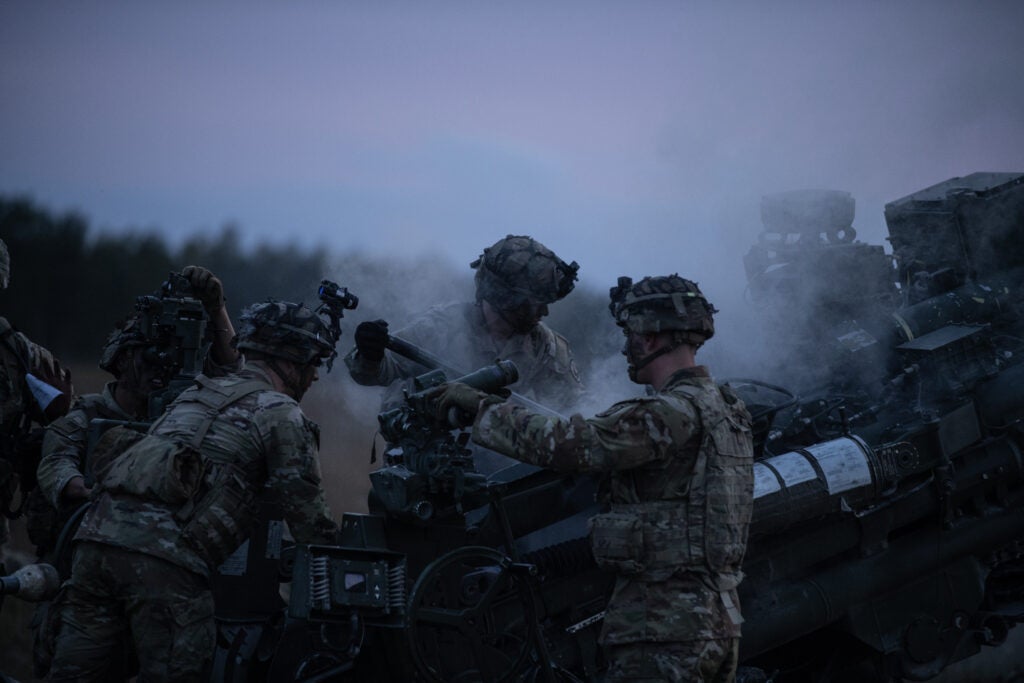Catching A Moment – an Interview with the US Army’s Videographer of the Year
Kevin Sterling Payne is a Visual Information Specialist that has worked for Training Support Activity Europe (TSAE) at the Training Support Center Grafenwoehr, Germany, for over two years. His primary duties include photo and video documentation of military training taking place in Grafenwoehr Training Area, as well as other training areas in Europe. In addition to this, he helps run the graphics and printing studio, and takes official command portraits in the TSC’s photo studio.
Kevin’s creative focus started at a young age with illustration, and his focus on photography started in high school. He earned a Bachelor of Fine arts with an emphasis in Photojournalism from San Jose State University in 2011, and had photos printed in several magazines including The Californian and The Mountain Network News prior to joining the US Army in 2013 as a 25V Combat Documentation / Production Specialist. Upon leaving active duty Kevin took a civilian job at TSAE where he still works as a Visual Information Specialist. Aside from photography and videography, Kevin’s other creative outlets include drawing, fine woodworking, blacksmithing, and creating installation and architectural artworks.
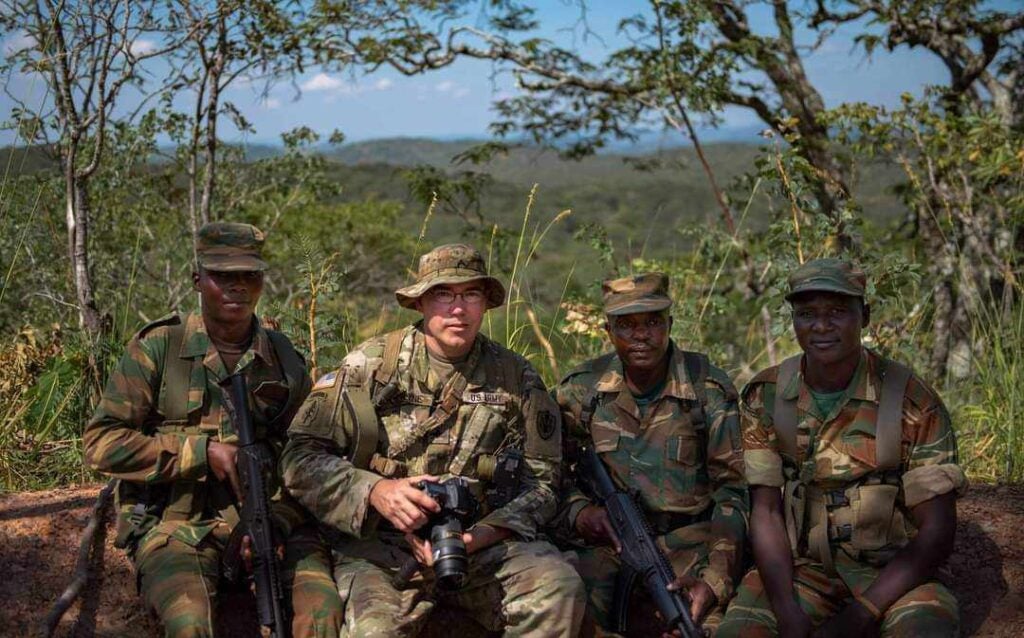
This year Kevin has been awarded a prestigious Army Videographer of the Year award. However, during final editing of this editorial Kevin has also just been awarded a title of the Department of Defense Civilian Videographer of the Year.
Wojciech: Hello Kevin, thank you for speaking with us today.
Kevin: Hi, my pleasure.
W: In the first place I would like to ask you – what pushed you, a person with a degree in arts, toward military service instead of civilian photography?
K: I always had a great interest in military history but not so much in military service. I was in my teens and twenties during GWOT, Iraq, and Afghanistan, and wasn’t excited to be a part of those conflicts. But something that always fascinated me from a civilian perspective was military photography. While walking past a bookstore in Bath, England, I happened to see a book about Larry Burrows in Vietnam. He was a photojournalist who spent nine years covering the conflict in Vietnam, which ultimately cost him his life. Anyway, the book really showcased how to present the war from a civilian perspective and show the public what the war is. It was something that really sparked my interest in military photography. So after I graduated College with a degree in photography and thought about what I wanted to do with my education, all that was really available was internships or local newspapers, covering local news, which really didn’t seem important to me, I wanted to do something more. So, I signed up. I figured that I’d would go to Afghanistan or Iraq, which by that time both conflicts had been going on for over a decade, cover those historical events.
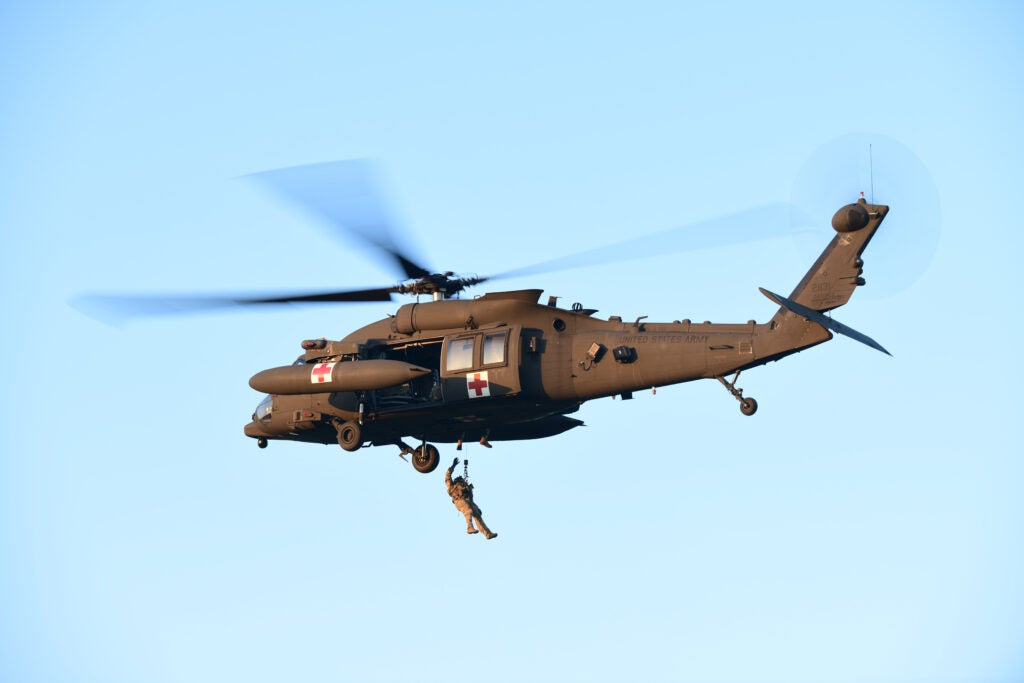
W: How can you explain the roles and tasks of a combat cameraman?
K: This job is multifaceted. Depends on who you are attached to. After you finish training with MOS 25V, now 46V… In the past Combat Camera was not under Public Affairs but Signal Corps. It was recently transferred out from the Signal Corps. A Combat cameramen’s job is not necessarily to send imagery to the public, it’s taking the pictures for military archive purposes. There is no spin, just documentation. It goes into the National Archives and public archives such as DVIDS. Our footage is used in several different ways. Some is of course published to the public, however, there are other completely internal assignments. For example, commanders can look at our footage of an event and evaluate what happened. It serves training purposes. Pictures and films can allow assessment of combat actions and training. A lot of that stuff doesn’t go anywhere outside of the military.
W: How does one become a combat cameraman? Is it a difficult job to achieve this Military Occupational Specialty?
K: In the army you need a fairly high ASVAB and GT score for the MOS. It is not something that every grunt can do. You need people who can learn how to use different technical products, not just cameras. You need to learn several different skills to do this job. We have 7 months of MOS training which includes 3 months of photography. There are many very niche products that you have to know how to use, and different products you need to be able to create. We do everything from official military portraits to combat documentation to crime scene photography. The videography course is 4 months of training including interviewing, video and audio recording, and editing classes so you can put together a final product. It is 7 months of training after your basic training. Only a handful of MOS have training that lasts so long. It is very unique. I believe there are only about 350 combat camera slots in the US Army.
W: That’s a pretty niche occupation. If there is a need for artistic abilities to fill the role of combat cameraman, do you have any freedom regarding your work?
K: Depends on the assignment. You, for example, can photograph a bunch of guys running and gunning, and take as many pictures as you can. Then you send the pictures to somebody else who edits them, and you never see them again. Then there are assignments that require you to do more. I worked for AFN at their European Headquarters. I traveled to 14 different countries and did 19 different missions. I would travel to a training or event, be there a week or even a month and the story I was going to tell was completely on me. I would figure out what I wanted to tell a story about, how to tell that story, and it was up to me to put it all together. For example, I went to a training in Mauritania with US and German SOF teams and went there to document their training. But when I arrived, nobody was training yet, so I did a story on a US water purification specialist and I talked about how we can purify water in Mauritania for use so it does not make us sick. So there was this well, that was not set up how the US Army would set it up, so she had to figure out how to purify all that water. She managed to come up a solution and managed to supply the camp with water for our daily use. So, that was my first story from that SOF training, water purification in the desert. Who would have guessed?
In some jobs, you have this freedom, but sometimes you have to do something just the opposite. For example, military portrait pictures that we have to take. They are all exactly the same, no creativity or freedom at all. But, after three years of sitting in one of those jobs, if you show that you are responsibly, and can be creative, you can push your branch manager to switch your position, and then with some luck you have options. If you prove yourself there you can usually move duty stations to a place with better opportunities.
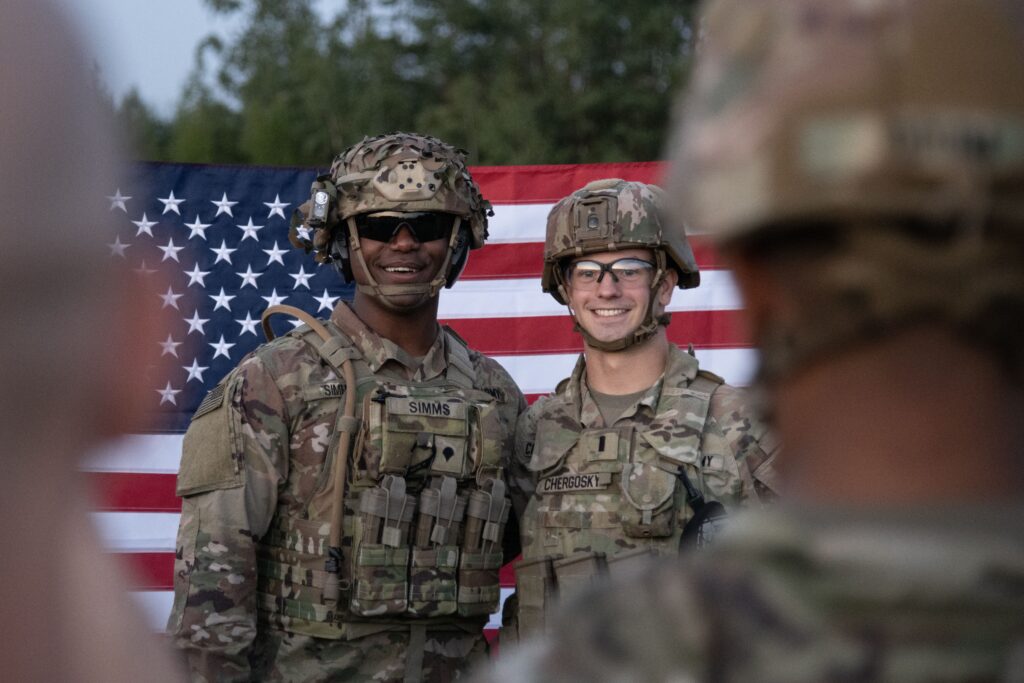
W: The US military puts a lot of attention to its heritage and the past. In regards to this and the fact that we are both somewhat interested in US Army history, what role does the heritage of the Signal Corps play in this job?
K: Espirit de corps is very strong, especially for COMCAM. Public Affairs Officers (PAO) and COMCAM have this rivalry and you are proud that you are not PAO. You have to go into the heat and cold to capture the footage everyone else sees. Signal Corps photographers have a very rich history of over 100 years. When the Signal Photographic Companies were formed in Signal Corps, they were bringing information to commanders on what was happening in the field. It was actually something important, showing people in the rear what was happening at the front. Now, we understand why COMCAM was transferred to public affairs because the work has to go through PAO for clearance anyway, it makes sense to be under them. But with that transition, a lot of us felt that we lost a piece of history. There is a lot of pride in COMCAM.
At the Defense Information School, where we do our MOS training, there is a hall of heroes, with memorials for those who were killed in the line of duty. There are very few military occupation specialties that are trained with other branches directly after basic training. Going into DINFOS you can be in a class together with Air Force, Marines, etc. Now we can be with all of the branches so it is really interesting. I honestly don’t know of many other MOS specialty training with other branches, other than linguistics at Defense Information School, DLI, and our job at DINFOS. It’s very rare. At AFN, I worked in a shop where there were more Sailors than Soldiers, and we also worked with Airmen. You can run into many different people working in this job. At my first duty station, I was with USASOC. I did missions with JSOC and I got to see the other branches work. I’ve been assigned to missions documenting everything from Marine tankers to US Coast Guard sailors.
W: How does your military experience as COMCAM translate into civilian life?
K: Obviously as a Visual Information Specialist working for the US Army, I do a lot of the same stuff I did as active duty COMCAM. I am still working with COMCAM soldiers on a daily basis as equals. As a civilian I do what is the closest occupation to COMCAM, but without uniform. It is not impossible to get this job in the states, they have VI Specialists just about everywhere, but as a US civilian overseas it is very difficult to get this job, simply because there are so few positions outside the US.
W: From your perspective – how different is war corresponding to COMCAM?
K: Historically, I would say some war correspondents were famous enough and good enough they were given open access to everything. Lee Miller was able to photograph frontline stuff that COMCAM wasn’t around to cover. That seems to have changed a lot modern times. Even in the Vietnam War there were many correspondents filming one spot, daily news types that would be escorted around by PAO and told what to film. There were only a select few who pushed themselves to go a mile further and show what is really happening. I think it is close to current day war corresponding.
There are few who really risk their lives just to tell the story. There’s only a handful of really famous conflict photographers out there today. COMCAM on the other hand is in the action. But as I’ve said before, a lot of it is for internal use, and hopefully, for archives to be preserved. I think from a historical perspective COMCAM is very important. In the future, hopefully more will be released to the public about what was photographed in Iraq and Afghanistan. When you watch documentaries of the War in Vietnam , you are usually watching the footage taken by the COMCAM, and not war correspondents. It is all archived for the future. Let’s take Ken Burns “Vietnam War” – majority of that footage was taken by combat cameramen. Even if it was not taken for publication then, we can see those videos and photos now.
W: Would you encourage other people who dream to connect their interest in photography with military to become COMCAMs?
K: Absolutely. If you have interest in photography and interest in being in the military – honestly it’s one of the best jobs in the military, you can have. You can see so much. I covered infantryman and I covered aviators. I have been in Blackhawks, Abrams tanks… you name it, I’ve probably been in or around one. I’ve seen so many different pieces of the puzzle that I think as one military occupation it gives one of the best insights into other military occupations as you are embedded with those people. You live, eat and sleep where they do. Some of their jobs are good and some really bad, but you can earn a great perspective on the how military works doing my job.
W: What stands behind the art of taking great pictures? Especially the military related ones?
K: Honestly, I think some people are born with a natural eye as I would call it. They can take out a cellphone and take a picture that’s going to be better than half the kids in our school can ever take. I have seen people who don’t consider themselves artistic but have high regard for the job, and want to know how to do better, learn to be very good photographers. Studying historical art is something that can help. If you understand lighting and composition, if you understand what what it takes for the artwork in the museum to be beautiful, you will understand the art of taking great pictures. COMCAM is not allowed to adjust the scene. COMCAM has to understand when the possibility of a great composition is in front of them and figure out how to can capture it.
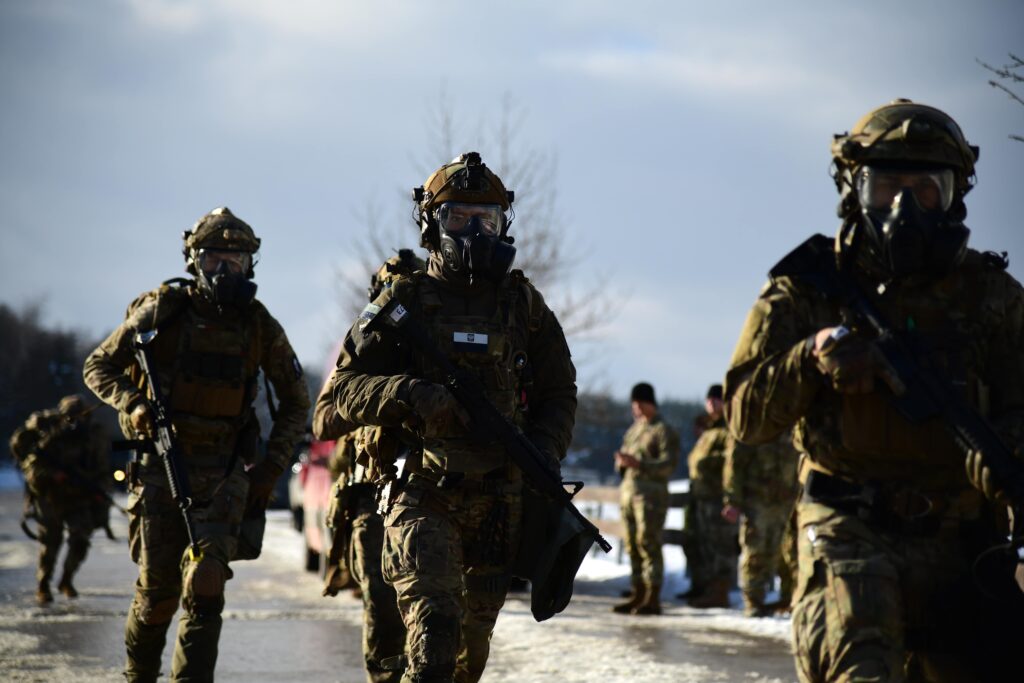
W: While you mentioned that it isn’t always the purpose of COMCAM, what’s it like seeing your work being used publicly?
K: I love it. It is interesting. Every year we look back for our annual report. I look myself up trying to find out where my work is being used. Most of the time I don’t know when my photos are published. So every year I try to do some research on it and it is interesting for me, seeing those big industry standards like Rolling Stone magazine using a photo I took, its
crazy. But I also find it fascinating when a military blog from a different country uses my pictures. There is standard media which is always looking at DVIDS for random pictures, for like stock photography. One of my photos was in local newspaper a couple weeks ago, but It is always a bonus when somebody outside of the standard media uses our photos.
For example I’m always curious to see when one person from Poland or Thailand downloads my photo. It’s just timing really, when I am photographing things in Germany, and somebody wants to use a picture of M777 and I took pictures of it recently, so somebody’s going to look up the most recent picture of it and there is my work. That is why I am always trying to put a variety of pictures published on DVIDS so somebody from somewhere uses it. And for me that is something that excites me – where my pictures end up.
W: What does the future hold?
K: I got into art school ‘cuz I’ve always loved to draw. I wanted to be able to draw images from my life. I would draw all those famous photos of soldiers from WW2 but this was all I could draw, looking at photos of someone else’s life. I originally took up photo studies so I could draw things from my life. After 20 years of photography I want to focus on getting back to drawing. I want to use some of my archived photos and turn them into graphics. Not
necessarily as hand drawn graphics but using modern tools and Adobe and drawing digitally, I would love to turn them into something.
W: You were recently awarded the Army Videographer of the Year award, what does it take to be the best videographer of US Army?
K: Honestly, it just takes being able to apply for it and you need to push yourself throughout the year. There are several different criteria. Even if you have the greatest video or photograph there is an entire portfolio that has to be submitted. You have to have different categories. You need to pay attention to all the details and make sure all the metadata is filled correctly. Any tiny little thing can knock you off the list. It takes really wanting to do it, as nobody pushes people to submit. It is something you need to want to do. I would say that you need to pay attention to small details and be keen on taking a variety of photos, and videos. Always present different styles and perspective on things. You need to be able to see things in a different light, and then present them to others in that light.
W: Thank you for your time.
K: You are welcome.

